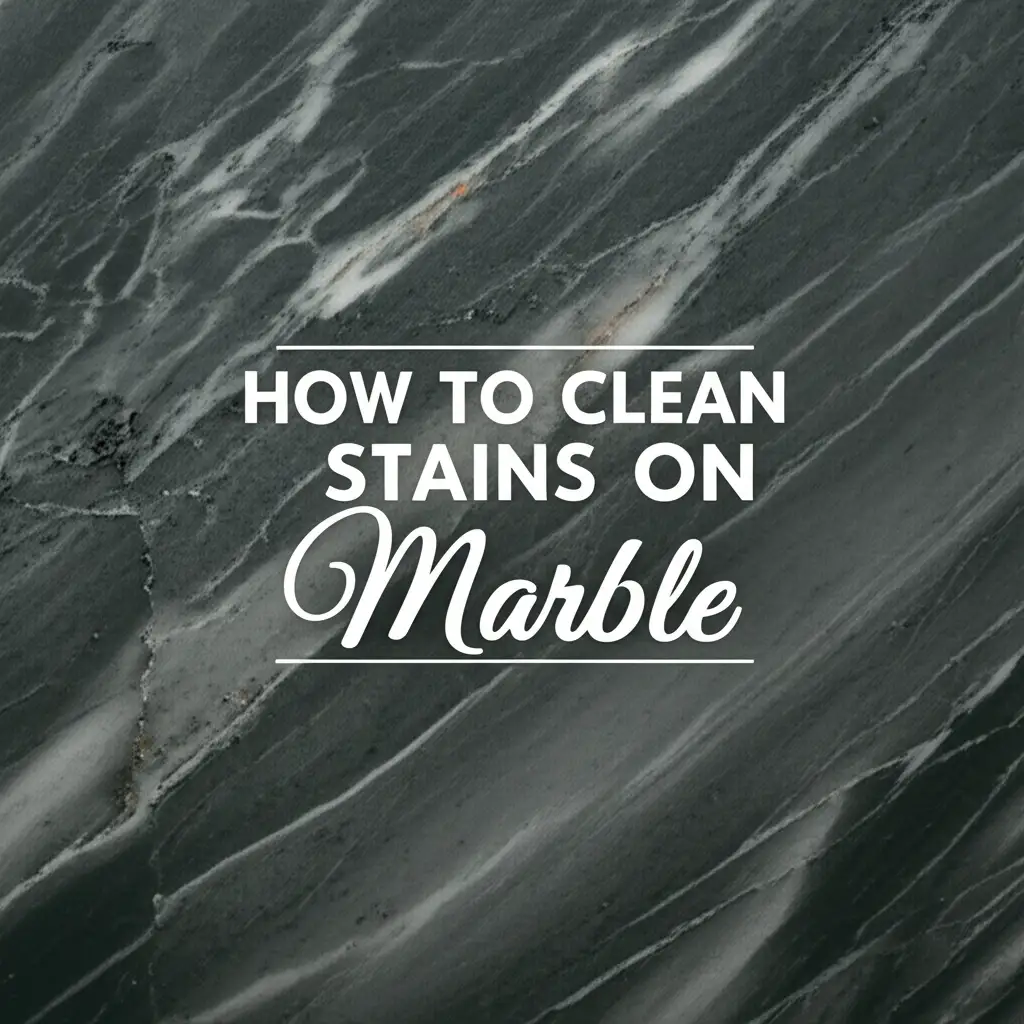· Home Care · 22 min read
How To Wash A Crochet Blanket

Proper Care: How To Wash A Crochet Blanket
Crochet blankets are warm, personal, and full of memories. We spend hours making them or receive them as heartfelt gifts. Keeping these handmade treasures clean helps them last a long time. Knowing how to wash a crochet blanket helps you protect its delicate stitches and fibers. You can maintain its softness and shape for many years.
This guide shares simple steps to wash your crochet blanket correctly. We will cover preparation, hand washing, machine washing, and proper drying techniques. You will learn about different yarn types and how they need special care. Let us keep your beautiful blankets looking fresh and new.
Takeaway
- Check yarn label: Identify the fiber content for proper washing methods.
- Spot treat stains: Address spills before washing the whole blanket.
- Hand wash delicate blankets: This method protects fragile stitches.
- Machine wash with care: Use a gentle cycle, cold water, and a laundry bag for sturdy blankets.
- Dry flat: Prevent stretching by laying your blanket flat to air dry.
Clear, Concise Answer
To wash a crochet blanket, first identify the yarn type. Hand wash delicate blankets using mild detergent and cool water. For sturdy ones, machine wash on a gentle cycle in a laundry bag. Always air dry your crochet blanket flat to maintain its shape and prevent stretching.
Preparing Your Crochet Blanket For Washing
Before you wash a crochet blanket, proper preparation saves time and prevents damage. Taking a few moments for these steps makes a big difference. It helps your blanket stay in good condition. I always check the yarn type and look for any issues.
First, identify the yarn material. Most crochet blankets use acrylic, cotton, or wool. Each yarn type needs a specific washing approach. The original yarn label often provides care instructions. If you do not have the label, consider the blanket’s age and feel. A wool blanket feels different from an acrylic one.
Next, inspect the blanket for any loose ends or snags. A quick repair now can prevent stitches from unraveling during washing. Gently tuck in any stray yarn tails. Look for stains or spots. Pre-treating these areas helps lift dirt more effectively. This simple check ensures the blanket is ready for cleaning.
Finally, gently shake out any loose debris. Pet hair, crumbs, or dust can cling to the fibers. A good shake outdoors removes surface dirt. This prepares the blanket for a deeper clean. Proper preparation protects your crochet work.
Identifying Yarn Types and Their Care
Different yarn types need different washing methods. Knowing your yarn prevents damage. I always confirm the fiber content first.
- Acrylic Yarn: This is a common choice for crochet blankets. Acrylic yarn is durable and machine washable. It dries quickly. You can often wash an acrylic blanket on a gentle cycle.
- Cotton Yarn: Cotton is natural and breathable. It can shrink if washed with hot water. Wash cotton blankets in cool water. They may take longer to dry.
- Wool Yarn: Wool is warm but very delicate. It can shrink or felt easily with heat and agitation. Always hand wash wool blankets. Use cool water and a special wool detergent. This helps preserve the fibers. You can learn more about how to wash a military wool blanket by understanding wool care principles. how to wash a military wool blanket
- Blends: Some blankets use a mix of fibers. If you have a blend, follow the care instructions for the most delicate fiber in the mix. For example, a wool-acrylic blend should be treated like wool.
Spot Treating Stains
Stains happen, but you can remove them without washing the entire blanket. Quick action helps lift most spots. I always try to spot treat first.
First, identify the stain type. Grease, food, or dirt stains need different treatments. Act quickly to prevent the stain from setting. Gently scrape off any excess material. Do not rub the stain, as this pushes it deeper into the fibers.
Apply a small amount of mild detergent or stain remover directly onto the spot. Use a clean cloth or sponge to blot the area. Work from the outside of the stain inwards. This stops the stain from spreading. Rinse the spot with cool water. Repeat this process until the stain disappears.
Always test your spot cleaner on a hidden part of the blanket first. This ensures it does not harm the yarn color or texture. For deep stains, a full wash might be necessary. But often, spot treatment saves the day.
Hand Washing Your Crochet Blanket
Hand washing is the safest method for most crochet blankets, especially those made from delicate fibers like wool or older, more fragile pieces. It gives you full control over the washing process. This method prevents stretching and damage that can happen in a machine. I find hand washing gives me peace of mind.
To start, fill a clean sink or a large tub with cool or lukewarm water. Hot water can cause shrinkage, especially with wool or cotton. Add a small amount of mild, rinse-free detergent specifically for delicate items. Avoid harsh chemicals or bleach. They can damage yarn fibers and colors. Swish the water to mix in the detergent evenly.
Next, gently submerge your crochet blanket into the soapy water. Do not twist, pull, or stretch the blanket. Gently press the blanket down to ensure it is fully saturated. Let it soak for about 15-20 minutes. This allows the detergent to break down dirt and oils. For a larger item, like a big blanket, you may find that learning how to wash clothes in a bathtub can be helpful for space and ease. how to wash clothes in a bathtub
After soaking, drain the dirty water. Refill the sink or tub with clean, cool water. Gently press the blanket to remove soap. Do not rinse under running water, as this can cause stretching. Repeat the rinsing process until the water runs clear and all soap is gone. This careful approach helps your blanket stay soft.
Steps for Hand Washing
Follow these steps for a gentle and effective hand wash. This process keeps your blanket safe. I always use these steps for delicate items.
- Prepare the Basin: Clean your sink or a large plastic tub. Fill it with cool or lukewarm water.
- Add Detergent: Pour a small amount of mild, delicate-fabric detergent into the water. Swirl the water to mix.
- Submerge the Blanket: Carefully place the crochet blanket into the water. Ensure it is fully wet. Press down gently.
- Soak: Let the blanket soak for 15 to 20 minutes. Do not agitate or scrub.
- Rinse: Drain the soapy water. Refill with clean, cool water. Gently press water through the blanket to rinse. Repeat until no soap remains.
- Remove Excess Water: Gently press the blanket against the side of the basin. Do not wring or twist. Lift the blanket carefully, supporting its weight.
Tips for Hand Washing Fragile Blankets
When hand washing fragile crochet blankets, extra care is important. These blankets can easily lose their shape or break stitches. I pay close attention to every detail.
Use a mesh laundry bag if you have one. Place the blanket inside before submerging it. This provides an extra layer of protection. It helps contain stitches and prevents snagging. Treat the blanket like a wet sponge. Just press, do not rub.
Support the blanket’s weight when lifting it from the water. Wet crochet blankets become very heavy. Lifting without support can cause stitches to stretch or break. Gather the blanket into a ball and cradle it. Move it to a clean towel for drying. This careful handling prevents distortion.
Never hang a wet crochet blanket to dry. The weight of the water will pull it down, causing it to stretch out of shape. Always prepare a flat drying surface. Hand washing extends the life of your most cherished crochet pieces.
Machine Washing Your Crochet Blanket
Machine washing a crochet blanket can be an option if your blanket uses sturdy, machine-friendly yarn like acrylic or some cottons. It saves time and effort compared to hand washing. However, it requires careful steps to prevent damage. I only machine wash blankets if I am sure they can handle it.
First, check the yarn type. Acrylic blankets are generally safe for machine washing. Some cotton blankets can also go in. However, wool or delicate blends should always be hand washed. Never put a wool crochet blanket in a washing machine, it will felt and shrink. If you are uncertain about the yarn, hand wash is always the safer choice. Knowing how to wash a knitted blanket can also provide good insights, as many principles apply to crochet. how to wash a knitted blanket
Before placing the blanket in the machine, use a large mesh laundry bag. This bag protects the blanket from snagging on the agitator or other items. It also helps contain the blanket’s shape during the wash cycle. The bag acts as a barrier, reducing friction. I always use a laundry bag for delicate items.
Select the correct wash cycle. Always use the “delicate” or “gentle” cycle setting on your washing machine. Choose cold water. Cold water prevents shrinkage and helps colors stay vibrant. Hot water can damage fibers and cause blankets to lose shape. Use a mild detergent, liquid is often better than powder as it dissolves more easily. Avoid using fabric softener, as it can build up on fibers and make the blanket feel less soft over time.
Steps for Machine Washing
Follow these steps carefully to machine wash your crochet blanket safely. These steps protect your handmade item. I find these steps make machine washing less stressful.
- Check Yarn: Confirm your blanket is made from machine-washable yarn like acrylic.
- Use Laundry Bag: Place the blanket inside a large mesh laundry bag.
- Set Machine: Select the “delicate” or “gentle” cycle.
- Choose Water Temperature: Use cold water only.
- Add Detergent: Use a small amount of mild, liquid detergent.
- Load Machine: Place the bagged blanket in the washing machine by itself. Do not overload the machine.
- Start Cycle: Run the wash cycle. Stay nearby to stop it if any issues arise.
Important Considerations for Machine Washing
Machine washing offers convenience, but it carries risks. Be aware of these points to protect your blanket. I always consider these factors before pressing start.
- Avoid Agitators: Top-loading machines with a central agitator can be rough on blankets. If you have such a machine, consider hand washing instead. Front-loading machines or top-loaders without an agitator are gentler. They tumble clothes, which is safer for delicate items.
- Wash Alone: Do not wash your crochet blanket with other items. Other clothes can snag the blanket or transfer lint. Washing it alone prevents tangles and damage. This also ensures the blanket gets a thorough clean.
- No Bleach or Harsh Chemicals: Never use bleach or strong cleaning agents. They can weaken yarn fibers and strip colors. Stick to mild detergents specifically designed for delicate laundry.
- Pre-Soaking: For very dirty blankets, a short pre-soak in cool water can help. This loosens dirt before the main wash cycle. You can also apply a pre-treatment for heavy stains.
By following these guidelines, you can safely machine wash some crochet blankets. This helps keep your special pieces clean without damage. Always prioritize the blanket’s safety.
Drying Your Crochet Blanket Properly
Drying a crochet blanket correctly is just as important as washing it. Incorrect drying can cause stretching, shrinking, or damage to the stitches. This can ruin the blanket’s shape and appearance. I always take great care during this stage.
Never put a crochet blanket in a machine dryer, especially not on high heat. The heat and tumbling motion are very harsh on yarn fibers. They can cause wool to felt, cotton to shrink, and acrylic to lose its softness or even melt. Machine drying almost always distorts the blanket’s original shape. Your beautiful stitches can become pulled or misshapen.
The best way to dry a crochet blanket is to air dry it flat. This method allows gravity to work with the blanket, not against it. It helps the blanket retain its original shape and size. Flat drying also prevents stretching that can happen if you hang a wet, heavy blanket. Patience is key when air drying.
First, remove as much water as possible after washing. Do not wring the blanket. Gently press out excess water by pressing it between two clean towels. You can roll the blanket in a towel to absorb more moisture. This step speeds up drying time. I always use this technique to prepare for air drying.
Steps for Flat Air Drying
Follow these steps for a perfect air dry. This method ensures your blanket keeps its shape. I use these steps for every crochet blanket I wash.
- Remove Excess Water: Gently press water out of the blanket. Do not wring. Roll it in a clean, dry towel to absorb more moisture.
- Prepare Drying Surface: Find a clean, flat surface. This can be a bed, a large table, or a drying rack. Lay down clean, dry towels or a clean sheet to protect the surface and absorb moisture.
- Position Blanket: Carefully lay the wet crochet blanket flat on the prepared surface. Gently pat and shape it back to its original dimensions. Ensure no parts are bunched up or hanging off the edge.
- Allow Airflow: If possible, ensure air can circulate around the blanket. You can place a fan nearby for faster drying. Flip the blanket periodically to allow both sides to dry evenly.
- Be Patient: Drying can take anywhere from 24 hours to several days, depending on the blanket’s thickness, yarn type, and humidity. Ensure the blanket is completely dry before folding or storing it.
What to Avoid When Drying
Avoid common drying mistakes to protect your crochet blanket. These actions can damage your hard work. I know what to avoid from experience.
- Do Not Hang: Never hang a wet crochet blanket on a clothesline or hanger. The weight of the water will pull the blanket downwards, causing it to stretch out of shape. This distortion is often permanent.
- Avoid Direct Heat: Keep your blanket away from direct heat sources like radiators, heating vents, or direct sunlight. High heat can damage yarn fibers, cause shrinkage, or fade colors.
- No Machine Dryer: As mentioned, machine dryers are too harsh. The tumbling and heat can felt wool, melt acrylic, and shrink cotton. Always air dry flat.
- Do Not Rush: Ensure the blanket is completely dry before putting it away. Storing a damp blanket can lead to mildew and a musty smell. Even slightly damp spots can cause problems. Patience is a virtue when drying crochet.
By following these simple drying rules, your crochet blanket will stay soft, shapely, and beautiful for many years. Proper care at this stage completes the cleaning process successfully.
Special Care for Different Yarn Types
Understanding how different yarn types behave is key to successful blanket care. Each fiber has unique properties that affect washing and drying. I treat each yarn type with specific care. This section provides detailed guidance for common crochet blanket yarns.
For example, wool is known for its warmth but also for its tendency to shrink and felt when agitated or exposed to heat. Acrylic, on the other hand, is much more forgiving. Cotton offers breathability but can also shrink. Knowing these characteristics helps you choose the right cleaning method. It ensures your blanket remains beautiful and intact.
Always err on the side of caution. If you are unsure about a yarn’s composition, treat it like the most delicate fiber. Hand washing and flat drying are almost always safe options, even for machine-washable yarns. This conservative approach prevents accidental damage. Your handmade treasures deserve the best care.
Proper care extends the life of your crochet blanket. It maintains its texture, color, and shape. Investing time in understanding yarn properties pays off in the long run. I encourage everyone to learn these differences.
Wool Crochet Blankets: Delicate Care
Wool crochet blankets offer incredible warmth and natural beauty. However, they require the most delicate care. Wool fibers are prone to felting and shrinking. This happens when heat and agitation cause the fibers to lock together. I always handle wool with extreme gentleness.
Always hand wash wool blankets. Use cool or lukewarm water. Hot water can cause irreversible damage. Select a detergent made specifically for wool or delicate items. These detergents are pH-neutral and do not strip natural lanolin from the wool. Fill a basin, add detergent, and gently submerge the blanket. Allow it to soak for 15-20 minutes. Do not rub or agitate.
Rinse the blanket by gently pressing clean, cool water through it. Repeat until no soap remains. Support the blanket’s full weight when lifting it. Gently squeeze out excess water. Roll the blanket in clean, dry towels to absorb more moisture.
Always air dry wool blankets flat. Place it on a clean, dry surface, shaping it to its original dimensions. Avoid direct heat or sunlight. Wool takes longer to dry than other fibers. Turn it periodically to ensure even drying. Proper wool care ensures your blanket stays soft and luxurious.
Acrylic Crochet Blankets: Easy Maintenance
Acrylic yarn is popular for crochet blankets because it is durable, affordable, and easy to care for. It mimics the feel of wool but without the delicate washing requirements. Acrylic blankets are generally machine-friendly. I find them very forgiving.
You can machine wash acrylic crochet blankets. Use a gentle or delicate cycle. Always use cold water. Hot water can cause acrylic fibers to lose their shape or become stiff. Place the blanket in a large mesh laundry bag to protect it from snags and tangles. Wash it alone or with similar items. Using a mild detergent is sufficient.
While acrylic can sometimes go in a dryer on a very low heat setting, air drying flat is still the safest option. High heat can melt or permanently distort acrylic fibers. Lay the blanket flat on a clean surface. Reshape it gently as it dries. Acrylic dries faster than natural fibers. This makes them a great choice for everyday use.
Acrylic blankets are resilient. They resist shrinking and stretching better than natural fibers. They also hold color well. With simple care, an acrylic crochet blanket will look good for many years.
Cotton Crochet Blankets: Breathable and Absorbent
Cotton crochet blankets are soft, breathable, and absorbent. They are perfect for warmer climates or as lightweight throws. However, cotton can be prone to shrinking and wrinkles. I pay attention to water temperature when washing cotton.
Cotton blankets can usually be machine washed. Use a gentle cycle with cold water. Cold water helps prevent shrinkage and fading. Use a mild detergent. You can place the blanket in a mesh laundry bag for extra protection, especially if it has delicate stitches. Wash alone or with similar items.
Avoid using hot water, as it can cause cotton to shrink significantly. While cotton can go into a dryer, air drying flat is still recommended to prevent shrinkage and maintain shape. If you must use a dryer, select a low heat setting. Remove the blanket while it is still slightly damp to reduce wrinkles.
Cotton can take a while to dry due to its absorbency. Ensure it is completely dry before storing to prevent mildew. With proper cold water washing and careful drying, your cotton crochet blanket will stay soft and comfortable.
Troubleshooting Common Crochet Blanket Issues
Even with the best care, crochet blankets can sometimes develop issues. Understanding how to fix these problems helps extend your blanket’s life. I have encountered these issues myself. Addressing them quickly keeps your blanket beautiful.
Common issues include stretching, pilling, and losing shape. These problems often stem from incorrect washing or drying methods. For example, hanging a wet blanket can cause significant stretching. Machine washing without a laundry bag might lead to snags or pills. Recognizing the cause is the first step to finding a solution.
Sometimes, a blanket that has lost its shape can be re-blocked. Blocking is a process that sets the stitches and shape of a crocheted item. This involves wetting the item and pinning it to its desired dimensions while it dries. It can revive a blanket that has stretched or become misshapen.
Prevention is always better than cure. Following the care instructions for your specific yarn type reduces the likelihood of these issues. But if a problem arises, do not despair. Many common issues have simple solutions.
Preventing and Fixing Stretching
Stretching is a common problem for crochet blankets, especially after washing. The weight of water pulls the fabric down. This can make your blanket longer and narrower than intended. I always try to prevent stretching.
The main cause of stretching is incorrect drying. Never hang a wet crochet blanket. Always lay it flat to dry. When transferring the blanket from the wash basin or machine, support its entire weight. Do not let it dangle. Gently press out excess water, do not wring.
If your blanket has already stretched, you might be able to fix it with a process called re-blocking. Gently re-wet the entire blanket. Lay it flat on a large, clean surface. Carefully pat and push the blanket back into its original shape and dimensions. Use rust-proof pins to secure the edges to a soft surface, like a foam board or thick towels. Let it dry completely in this pinned position. This can help “train” the fibers to return to their intended shape.
Prevention is simple: always dry your crochet blanket flat. This one step will save your blanket from significant distortion.
Dealing with Pilling
Pilling happens when short fibers on the surface of the yarn rub together, forming small balls or “pills.” This is common in acrylic and some wool yarns. It can make your blanket look worn. I remove pills to keep blankets looking fresh.
Pilling often occurs in areas of high friction, like where the blanket rubs against furniture or other clothes. While it is hard to prevent entirely, machine washing delicate items in a laundry bag can reduce friction. Washing with cold water also helps.
To remove pills, you can use several tools:
- Fabric shaver: This is an electric device that shaves off pills. Use it gently and carefully.
- Lint roller: Some lint rollers have sticky surfaces that can pull off small pills.
- Pumice stone or sweater comb: These manual tools gently scrape pills off the fabric. Work in small sections.
- Scissors: For stubborn, large pills, small sharp scissors can carefully snip them off. Be careful not to cut the blanket fibers.
Regularly removing pills keeps your blanket looking neat. It maintains its soft texture. Pilling does not mean your blanket is ruined; it just needs a little care.
Maintaining Blanket Softness
Over time, blankets can lose their softness. This can be due to detergent residue, hard water, or simply repeated use. I work to keep blankets feeling soft.
First, use a mild, gentle detergent. Harsh detergents can strip fibers of their natural softness. Ensure you rinse the blanket thoroughly after washing. Any leftover soap can make the fabric feel stiff. If you have hard water, consider adding a little white vinegar to the rinse cycle. Vinegar acts as a natural fabric softener and helps remove mineral buildup.
Air drying flat also helps maintain softness. Machine drying, especially with high heat, can make some yarns feel rough. For acrylics, sometimes a very low heat tumble in the dryer for a few minutes after air drying can fluff the fibers, but only if the yarn is suitable.
Proper storage also plays a role. Store your clean, dry blanket in a breathable bag or container. Avoid compressing it tightly, which can flatten the fibers. Regularly fluffing your blanket can also help keep it soft. These simple steps ensure your crochet blanket remains cozy and inviting.
Frequently Asked Questions
How often should I wash a crochet blanket?
The frequency depends on use. For decorative blankets, wash every 3-6 months. For blankets used daily or by pets/children, wash every 1-2 months or as needed. Always wash if spills or visible dirt occur. Regular care keeps your blanket fresh.
Can I use fabric softener on a crochet blanket?
It is generally not recommended. Fabric softeners can build up on yarn fibers, making them stiff or greasy over time. They can also diminish the natural softness of certain yarns. Stick to mild detergents and proper rinsing for the best results.
What if my crochet blanket is very old and fragile?
For very old or fragile crochet blankets, always hand wash them. Use cool water and a tiny amount of mild, pH-neutral detergent. Avoid any agitation. Support the blanket fully when moving it. Air dry flat, ensuring no stress on the stitches. Consider consulting a textile conservator for extremely valuable pieces.
How do I store a crochet blanket?
Store a clean, completely dry crochet blanket in a breathable cotton pillowcase or a dedicated fabric storage bag. Avoid plastic bags, which can trap moisture and cause mildew. Store it in a cool, dry place away from direct sunlight. Fold it loosely to prevent permanent creases.
My crochet blanket smells musty after washing. What happened?
A musty smell indicates the blanket was not completely dry before storage or during the drying process. Even slight dampness can lead to mildew. Re-wash the blanket, ensuring thorough drying. Use a fan or dehumidifier to speed drying. Make sure the blanket is bone dry before folding.
Can I dry clean a crochet blanket?
Dry cleaning is not usually recommended for crochet blankets. The chemicals used can be harsh on delicate fibers and may damage the yarn or alter its texture. It is best to stick to hand washing or careful machine washing as per the yarn’s specific care instructions.
Conclusion
Taking care of your crochet blanket is a simple task that protects your handmade treasure. We covered how to wash a crochet blanket, from preparing it for cleaning to drying it correctly. Always check the yarn type first. This helps you choose between hand washing or machine washing. Remember, delicate yarns like wool always need hand washing.
Proper drying is just as important. Always air dry your crochet blanket flat to maintain its shape and prevent stretching. Avoid machine dryers, as they can cause irreversible damage. With these simple steps, your crochet blanket will stay soft, beautiful, and last for many years to come. Give your cherished blanket the gentle care it deserves.
Do you have a beloved crochet blanket that needs cleaning? Follow these steps to ensure it gets the best care. Share your crochet blanket washing tips with us!
- crochet blanket care
- washing blankets
- handmade blanket cleaning
- delicate laundry




